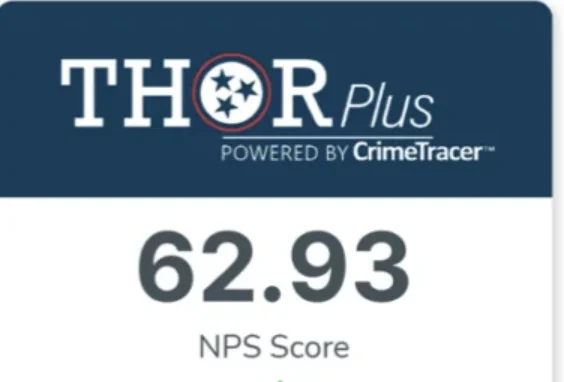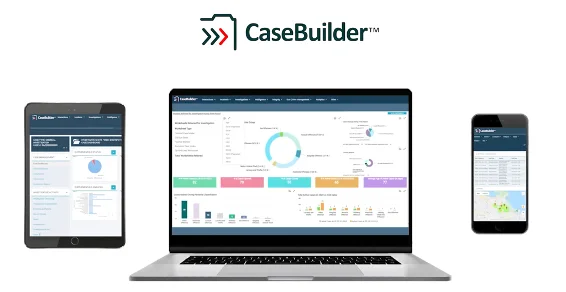There’s no substitute for the fresh opportunity to collect evidence, interview witnesses, and provide community support. What you do in the first 48 hours informs everything that happens after.
But, of course, most investigations don’t end after two days. Those first 48 hours following a gun crime are reactive, responding to an incident that just happened; after that, investigators can switch to a more proactive and strategic approach. The process of identifying the shooters and building a case against them is complex and can continue for weeks or even months.
Best Practices
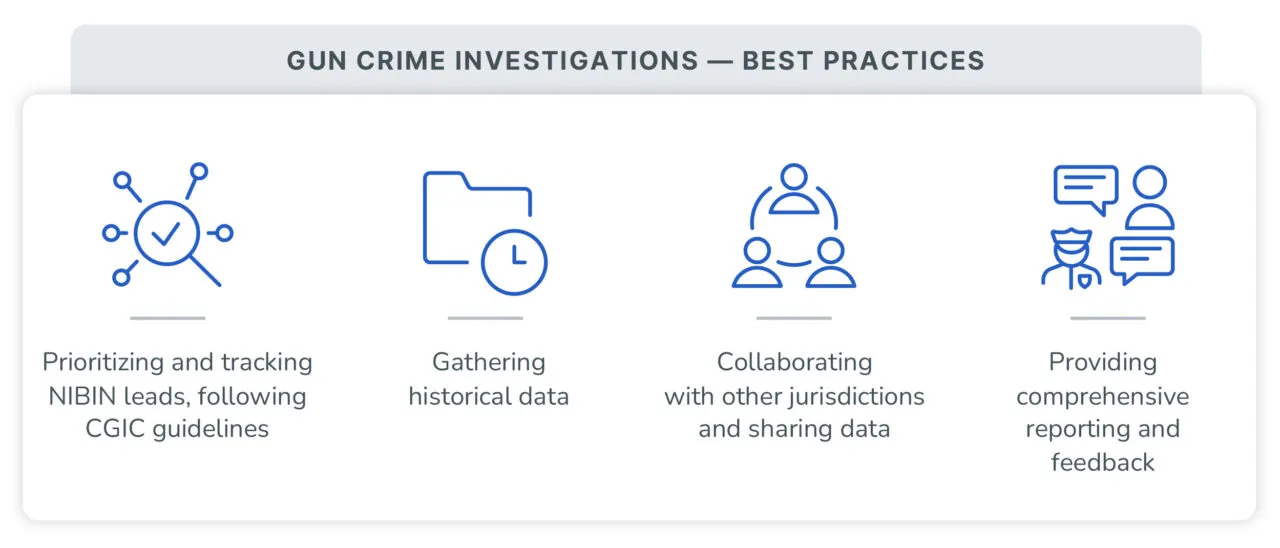
An effective and efficient investigation requires following certain best practices, some of which are universal and some of which are agency- and situation-specific. The universal best practices include:
- Prioritizing and tracking NIBIN leads with adherence to the National Crime Gun Intelligence Center Initiatives
- Gathering historical data and deploying resources
- Collaborating with other agencies
- Providing comprehensive reporting and feedback.
It’s important to remember every department has its own playbook for dealing with different kinds of gun crimes (e.g., multi-victim shootings, gang shooting, engaging with violence interrupters, and so on). An agency can set up automated rules in CaseBuilder™ to lay out the proper sequence of actions, establishing their own best practices even before the initial response. Staying organized in this way is essential, especially with so many items happening simultaneously.
NIBIN Prioritization and Tracking
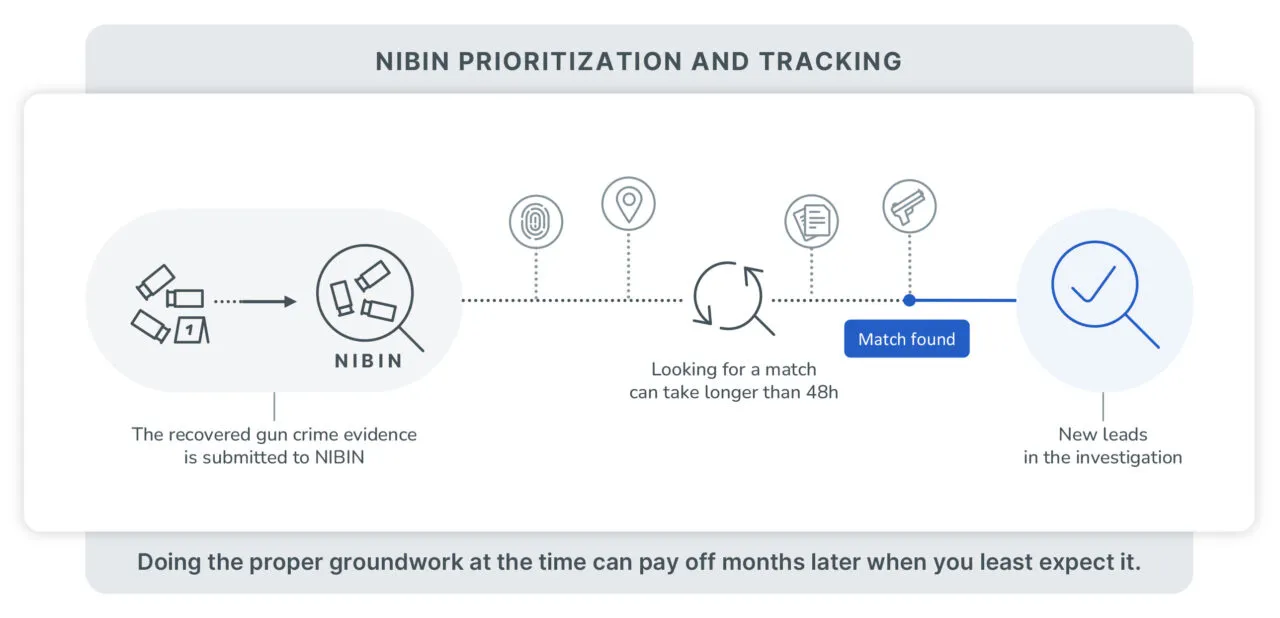
After the NIBIN Correlation Center returns information regarding probable or confirmed NIBIN matches, the next step is to track and prioritize leads and assign them for further investigation. Sometimes the Correlation Center will report that matches occurred, and while this may initially be disappointing, it’s important to remember that such investigative groundwork is essential and can often pay off later. For instance, the same weapon used in the gun crime investigation you are working on now could resurface months later during a traffic stop, subsequently providing the investigative momentum needed to finally close a months-old case. It can’t be overstated—doing the proper groundwork of canvassing the crime scene and submitting relevant ballistic evidence to your local CGIC operation for further analysis can set you up for investigative success, even when you least expect it.
Gathering Historical Data and Deploying Resources
As we mentioned before, many initiatives are happening simultaneously within the context of a gun crime investigation. For instance, as the Correlation Center processes ballistic evidence to make an assessment about a potential NIBIN hit, investigative teams are actively following up on leads using a system like CrimeTracer™, as well as implementing proactive efforts to prevent further violence. Such proactive efforts often require a more holistic and historical understanding of gun crime trends in a particular area. To better assess this, crime analysts will produce temporal heat maps that identify where gun violence occurs most often, enabling command staff to determine which communities may need to deploy violence interrupters as well as other critical resources.
Collaborating with Other Agencies
Running down leads and building a case requires connecting disparate pieces of information. That job is helped immeasurably by collaborating with other investigative agencies within the jurisdiction and outside the jurisdiction. To highlight the importance of this, consider the scenario we mentioned earlier, where a gun crime has gone unsolved and then, months later, a weapon recovered during a routine traffic stop is confirmed as a NIBIN hit. Now, imagine the initial gun crime occurred in California and the traffic stop months later occurred in Florida. It is of critical importance that these agencies in California and Florida can collaborate across jurisdictions and share data with one another to prevent this potential offender from committing more crimes.
Organizing effective investigative digital case folders, probable cause and investigative supplemental work into a cohesive is a major factor in the success of a prosecution. Capturing and securely disseminating a case to prosecution is just one step in removing serial trigger pullers from the cycle of violence. CaseBuilder is foundational in making that happen.
CrimeTracer and CaseBuilder are two powerful investigative tools that can help law enforcement agencies collaborate with one another more effectively and efficiently. CrimeTracer is a law enforcement search engine that retrieves and consolidates information from police repositories and other data sources. The platform lets investigators use natural language search terms to search over 1.3 billion records across more than 40 data sources. Information found might match up with a witness description, address, or another bit of evidence in the current investigation.
The search engine is an extremely helpful tool for investigators to use while assembling their cases in CaseBuilder, a comprehensive case management platform that provides a digital case folder for organizing, storing, and searching information. The CaseBuilder platform can also incorporate evidence from other sources, such as CCTV video and tips sent from citizens through the community portal.
Ultimately, CaseBuilder and CrimeTracer are both built to enhance collaboration among agencies. The more data available for CrimeTracer to sift through, the more information available to store in CaseBuilder, the more effective an investigation can be.
Feedback to all Applicable Stakeholders
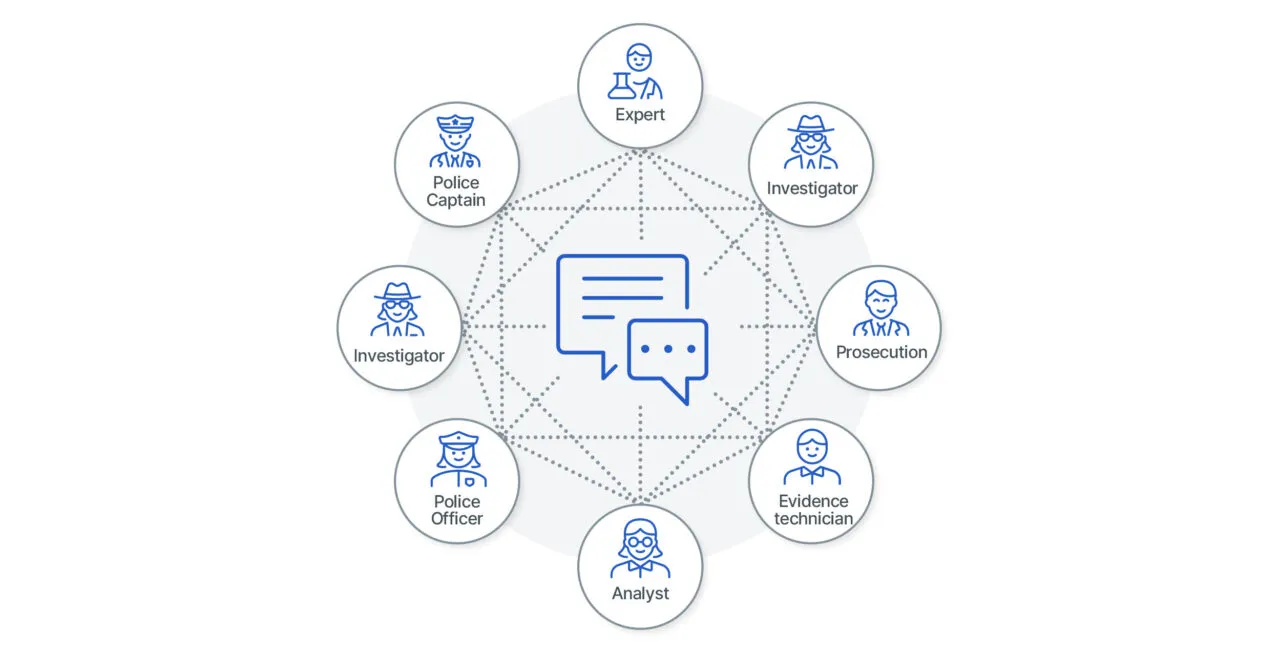
Reporting outcomes and providing feedback to all the personnel involved in an investigation, from the patrol officers who initially recovered evidence, to the investigators who built the case, to the prosecutors who present the case at trial, closes the circle and provides many benefits. For instance, such feedback helps command staff continuously improve on processes, such as assessing caseloads and identifying additional training that may be needed. Additionally, acknowledgment of the critical role that a particular stakeholder played in the investigative process can improve the overall gun violence reduction strategy in the agency. This is especially important at a time when a study shows decreasing clearance rates for aggravated assaults and homicide lead to more violence.
Conclusion
The need to effectively investigate gun crimes has never been more pressing, with roughly 20,000 deaths (not counting suicides) and over 38,000 injuries occurring every year. It’s important to remember that investigations are part art and part science. The “art” consists of the elements that cannot directly be taught, such as instinct and intuition, while the “science” encompasses the measurable variables, the organized systems, the act of following up on a hypothesis based on significant information obtained from a system like CrimeTracer, and so on Ultimately, merging the art and the science together is critical as investigators look to solve cases in the days, weeks, and months following a gun crime incident.


